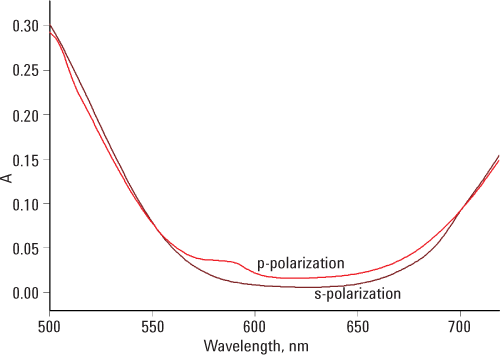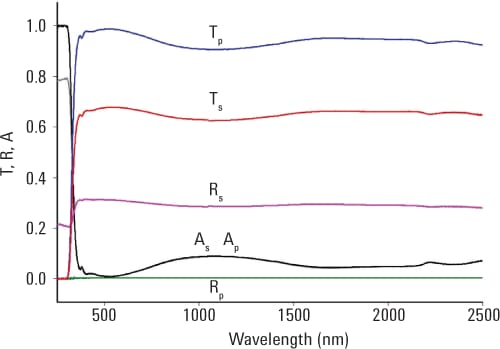Access Agilent eNewsletter, March 2014
>> Update My Profile | Subscribe to Access Agilent | Article Directory
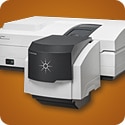
Agilent Cary 7000 Universal Measurement Spectrophotometer offers increased accuracy and lower cost-per-analysis of solid samples
By Travis Burt
Agilent Applications – Spectroscopy
Improving productivity and lowering cost-per-analysis has been one of the major concerns for commercial QA/QC users of UV-Vis-NIR spectrophotometry. The new Agilent Cary 7000 Universal Measurement Spectrophotometer (UMS) greatly improves productivity by using automation to reduce the cost-per-analysis of solid samples. Users can collect hundreds of UV-Vis-NIR spectra, unattended and overnight, or characterize optical components or thin films in minutes to hours rather than hours to days. What’s more, the ability to measure transmittance and reflectance through automation saves time in repositioning samples or swapping measurement accessories in the system. Artifacts are reduced, as well.
Here are a few examples that demonstrate the different ways the Agilent Cary 7000 UMS can advance materials analysis, expand research, and save time and money.
Rapid, accurate, unattended measurements of CBSs
Cube beam splitters (CBSs) are small but critical optical components that have a wide variety of uses in consumer products, high-technology micro-positioning equipment, and fiber-optic telecommunications. Spectral information from a CBS provides useful insight for optical engineers at the design phase, giving QA/QC departments better control metrics during final testing.
The Agilent Cary 7000 UMS offers independent motorized control over the angle of incidence onto the sample and the position of the detector, which can be freely rotated in an arc around the sample. This independent control of sample rotation and detector position permits rapid, accurate, and unattended measurements of CBS transmission and reflectance.
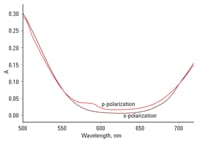 Enlarge
Enlarge
Figure 1. Absorptance spectra for s- and p-polarization of a cube beam splitter measured using a Cary 7000 Universal Measurement Spectrophotometer.
Traditionally, reflectance (R) and transmittance (T) measurements were performed using spectrophotometers fitted with different accessories. In practice, this led to different areas of the CBS being tested due to illumination beam patch size variations between measurement modes and movement of the illumination beam over the sample. The Agilent Cary 7000 UMS measures T and R at the same sample point without moving the sample, overcoming one source of artifacts on the results. In addition, the sample can be automatically rotated 180° to permit static T and R measurements to be performed in the forward or reverse direction. In either case, T and R are measured from the same point saving valuable time.
In this example, we were able to assess transmission and reflection without moving the sample. Self-consistent spectral data was also collected, which are useful for determining total losses (e.g. retro-reflection, internal absorption, or scattering). Absorptance (A), (where A =1-T-R) for s- and p-polarized light is shown in Figure 1, which displays the spectral profile of light associated with these losses in a cube beam splitter. Learn more about these results by reading Agilent Application Note 5991-2522EN.
More consistent measurement and classification of glass products
Recent developments in composites and specialty coating technology have allowed glass products to be tailored to very specific needs, environmental conditions, and lighting demands. In addition, developers and users are equally focused on the energy efficiency of the product and fit-for-purpose general requirements to block UV radiation, transmit visible light, repel thermal radiation (heat) in summer, and retain heat in winter. Nationally and internationally recognized standards have been developed to ensure that measurement and classification of glass products is performed in a controlled and comparable manner. We measured the performance of different glass samples against international standards using the Agilent Cary 7000 UMS. See Agilent Application Note 5991-2514EN for more details on this application.
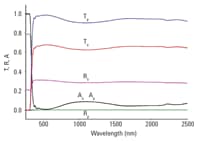 Enlarge
Enlarge
Figure 2. Transmission, reflection, and the associated absorptance spectra of an architectural glass sample (2 mm thick), analyzed on a Cary 7000 Universal Measurement Spectrophotometer. Both s- and p-polarized spectral data were collected at 60° angle of incidence.
Each standard has its specific reporting parameters, which were automatically calculated and displayed in the Agilent Cary WinUV software report. Furthermore, each data set was collected automatically and unattended, highlighting the true productivity benefit provided by the Cary 7000 UMS. After initial configuration and baseline collect, each collection was set and executed in less than three minutes. Reflection and transmission measurement on the same sample required no further interaction, as the collect was run for any angle of incidence or reflection specified.
Faster collection helps reduce overall testing cycle times
The Cary name has become the standard for researchers wanting to extend the boundaries of spectrophotometric measurement. The Agilent Cary 7000 UMS continues this tradition by providing even deeper insights into advanced materials for research and industrial design. Higher throughput produces better signal-to-noise ratios and better data quality. Faster collection times speed the delivery of results for time-critical processes. In addition, the unmanned, automated data collection capability of the Cary 7000 UMS provides improved accuracy that saves time by eliminating expensive rework.
Agilent’s Cary 7000 UMS is supported by a comprehensive range of cells, tubing, fittings, and supplies, with unmatched technical support and service options whenever and wherever needed. See what Agilent can do to help advance your material research.
>> Update My Profile | Subscribe to Access Agilent | Article Directory
